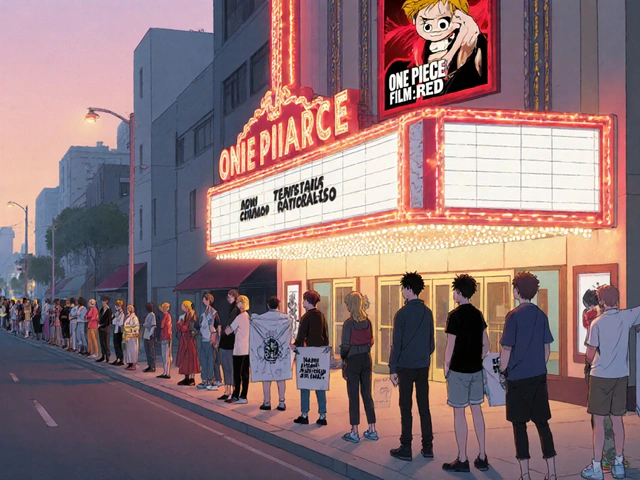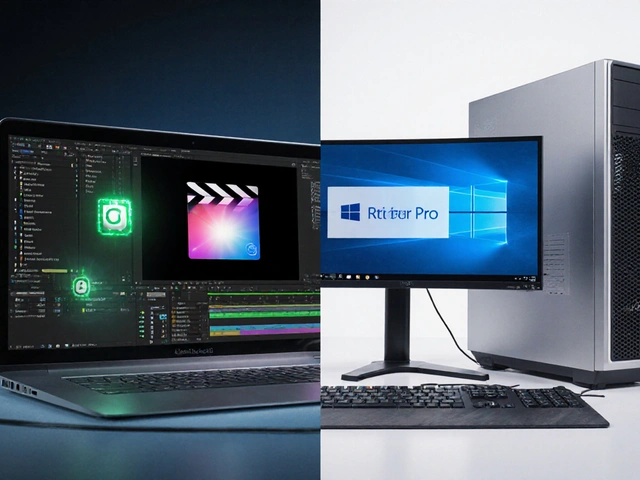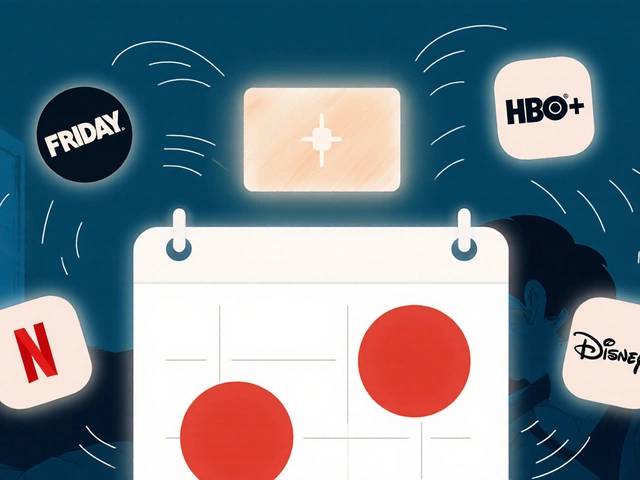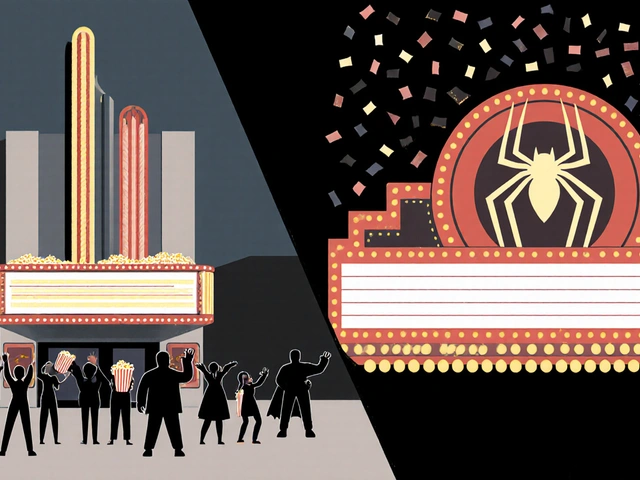5
Anime Theatrical Events: How Fandom, ScreenX, and Box Office Drive Animated Cinema
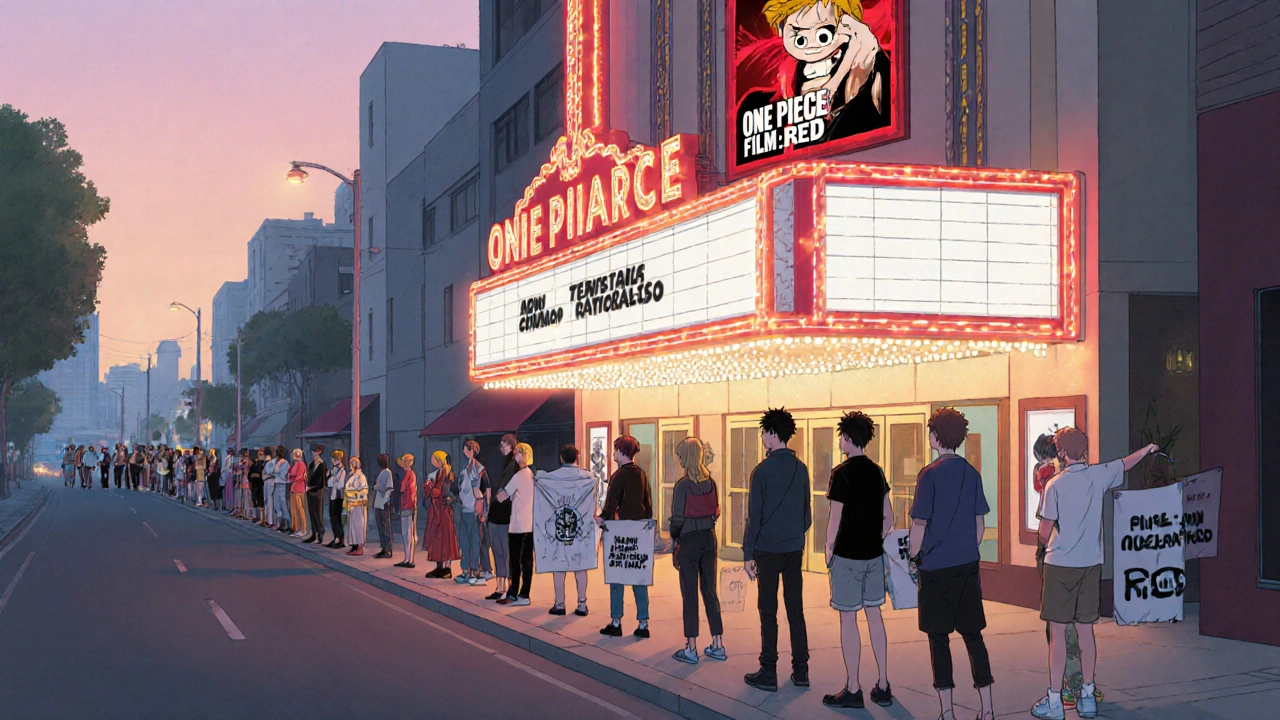
On a Friday night in Tokyo, fans line up outside a theater at 4 a.m. They’re not waiting for the latest Marvel movie. They’re here for the premiere of One Piece Film: Red. Some wear custom-made cosplay. Others hold handmade banners. The theater’s walls pulse with synchronized light shows. When the opening credits roll, the entire audience sings along - in unison. This isn’t just a movie screening. It’s a cultural event. And it’s happening everywhere - from Osaka to Paris, from Sydney to New York.
Why Anime Theatrical Events Are Bigger Than Ever
Anime used to be a niche interest. Now, it’s a global box office force. In 2023, Japanese animated films made over $1.2 billion worldwide. That’s more than the entire domestic box office of countries like Norway or New Zealand. And it’s not just about volume - it’s about impact. Demon Slayer: Mugen Train became the highest-grossing Japanese film of all time, earning $507 million globally. It outperformed Avengers: Endgame in Japan. That’s not a fluke. It’s a pattern.
What’s driving this? It’s not just better animation. It’s the way fans experience these films. Unlike streaming, theatrical releases turn watching anime into a shared ritual. Fans treat these premieres like concerts. They arrive early. They buy limited merch. They post live reactions on social media. Studios know this. That’s why they release films in waves - first in Japan, then across Asia, then Europe and North America - building hype like a tour.
The Role of Fandom in Box Office Success
Fandom isn’t just a side effect of anime’s popularity - it’s the engine. Studios don’t just make movies. They build events around them. Take My Hero Academia: World Heroes’ Mission. Before its 2021 release, the studio launched a global campaign: fan art contests, live-streamed Q&As with voice actors, and exclusive posters at select theaters. The result? The film opened in 45 countries on the same day. It earned $22 million in its first weekend - $18 million of that outside Japan.
Why does this work? Because fans feel ownership. When a studio invites them into the process - by letting them vote on posters, submit fan songs, or even name minor characters - they don’t just watch. They promote. They organize watch parties. They buy tickets in bulk for friends. In 2022, a fan group in Brisbane bought 120 tickets for Jujutsu Kaisen 0 and turned it into a community fundraiser. The theater had to add a second screening. That’s the power of organized fandom.
ScreenX: When the Movie Spills Off the Screen
Traditional theaters show movies on one screen. ScreenX changes that. Developed by CJ 4DPLEX, ScreenX uses side panels to extend the image onto the theater’s walls. It’s not 3D. It’s not IMAX. It’s immersion. In Attack on Titan: The Final Season theatrical release, the walls erupted with flying Titans and collapsing cityscapes. When Eren roared, the sound came from behind you. When the walls cracked, you felt it.
ScreenX isn’t just a gimmick. It’s a business strategy. Theaters with ScreenX charge 30-50% more per ticket. And fans pay it. In 2023, ScreenX accounted for 12% of all anime theatrical revenue in the U.S. - despite being available in fewer than 150 locations. Why? Because it turns watching into an experience you can’t replicate at home. You can’t pause it. You can’t mute it. You’re in the middle of it.
Studios now tailor scenes for ScreenX. Directors film extra angles. Animators add motion to background elements. Even minor scenes - like a character walking down a hallway - are extended to fill the side panels. It’s expensive. But it works. One Piece Film: Red opened in ScreenX in 68 theaters across North America. It earned $1.8 million in its first three days - 28% of its total U.S. opening.
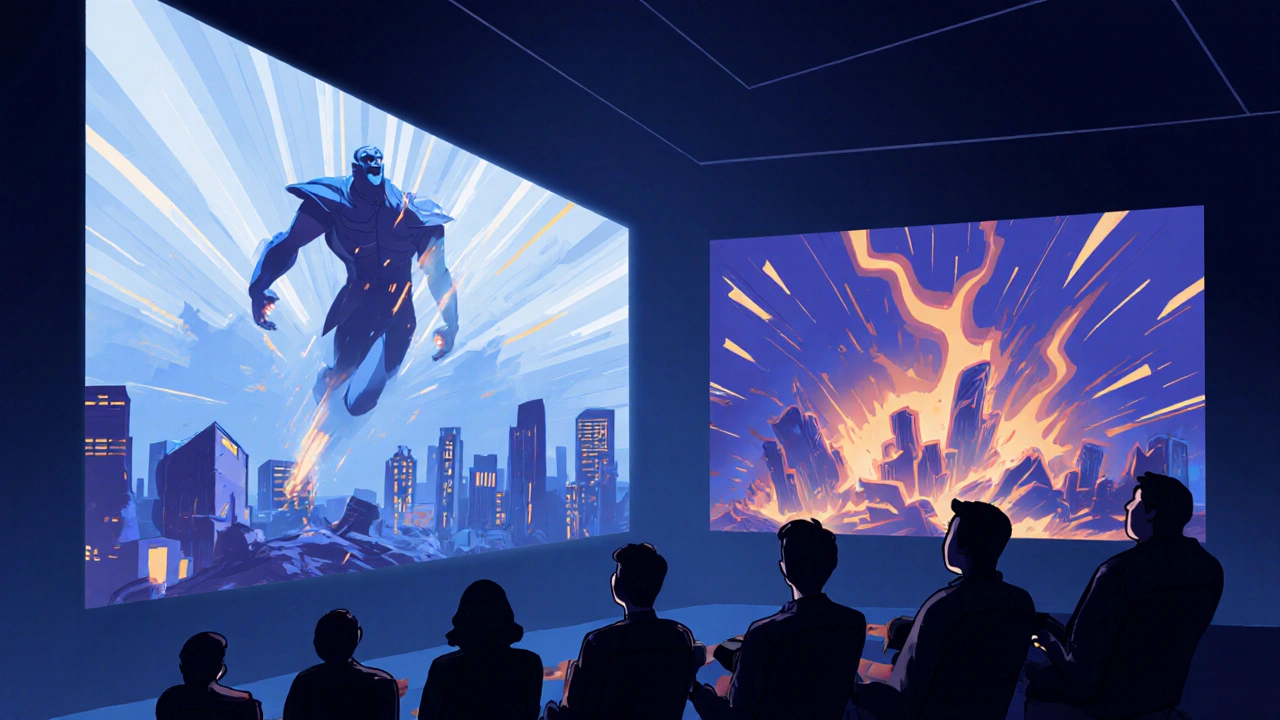
Box Office Trends: Where Anime Is Winning
Anime isn’t just doing well - it’s reshaping the rules. Here’s what’s changed:
- Release windows are shrinking. Films now hit theaters in Japan and the U.S. within 48 hours. No more waiting months.
- Weekend openings matter more than total runs. A film like Evangelion: 3.0+1.0 made $42 million globally in its first weekend - then dropped off fast. That’s okay. The goal isn’t longevity. It’s impact.
- Non-Japanese markets are driving growth. In 2023, 68% of anime box office revenue came from outside Japan. The U.S. and France lead. But Brazil, Mexico, and Indonesia are rising fast.
- Mid-budget films outperform blockbusters. The Garden of Words cost $3 million to make. It earned $21 million. Weathering With You cost $22 million. It earned $185 million. Big budgets don’t guarantee returns. Emotional storytelling does.
What’s next? More localized releases. More fan-driven marketing. More theaters partnering with anime studios to create exclusive experiences - like pre-show live performances, themed food, or AR apps that unlock digital collectibles.
Why Streaming Can’t Replace Theatrical Anime
Netflix and Crunchyroll have made anime more accessible than ever. So why do fans still rush to theaters? Because streaming is passive. Theaters are communal.
When you watch Demon Slayer at home, you’re alone. When you watch it in a theater, you’re part of a crowd that gasps, cheers, and cries together. You don’t just see the story - you feel it. That’s why anime theaters have higher attendance rates than most Hollywood films. In 2024, the average anime theatrical screening had 72% capacity. The average Hollywood film? 51%.
Plus, studios use theatrical runs to test audience reactions. If a film performs well in theaters, it gets a sequel. If it flops, it’s quietly buried. That’s why My Hero Academia got a fourth movie - and Blue Exorcist: The Movie didn’t get a follow-up.
What’s Coming Next
2025 is shaping up to be the biggest year yet. One Piece Film: Red sequel is in early development. Attack on Titan is getting a final cinematic trilogy. And studios are experimenting with hybrid formats - like live-action anime concerts, where voice actors perform on stage while the film plays behind them.
ScreenX is expanding. New formats like 4DX (motion seats, wind, scent) are being tested for anime. In Seoul, one theater released Jujutsu Kaisen 0 with a scent system that released the smell of rain and blood during key scenes. Fans loved it. Critics called it over-the-top. The theater sold out every show.
What’s clear? Anime isn’t just a genre. It’s a movement. And the theater is its cathedral.
Why do anime films make more money in theaters than on streaming platforms?
Anime films earn more in theaters because they’re designed as events, not just content. Theatrical releases create urgency - limited-time screenings, exclusive merch, and communal experiences that streaming can’t replicate. Fans pay premium prices not just to watch, but to belong. A film like Demon Slayer: Mugen Train made $507 million globally in theaters, while its streaming rights were sold for a fraction of that. Theaters turn viewers into participants.
What is ScreenX, and why is it important for anime?
ScreenX is a multi-projection system that extends the movie image onto the side walls of a theater, creating a 270-degree immersive experience. For anime, it’s critical because action-heavy scenes - like giant robots fighting or characters flying through cities - become more visceral. Fans feel like they’re inside the world. Studios now animate extra visuals specifically for ScreenX, making it a unique selling point that justifies higher ticket prices and drives repeat attendance.
Do anime films do better in certain countries?
Yes. Japan remains the biggest market, but international growth is driving the boom. The U.S. and France lead in overseas revenue, followed by Brazil, Mexico, and Indonesia. In France, anime films regularly open in over 300 theaters - more than most Hollywood blockbusters. Cultural affinity matters: countries with strong manga readership, like Germany and Poland, also show high attendance. Studios now tailor marketing to each region - using local voice actors, releasing posters with regional heroes, and timing releases around local holidays.
Why do fans line up for hours to see anime movies?
It’s about identity and community. For many fans, attending an anime premiere is a rite of passage. It’s a chance to wear their favorite character’s outfit, meet others who share their passion, and be part of something bigger than just watching a film. Studios encourage this by releasing limited-edition posters, exclusive soundtracks, and early access to merchandise. The line isn’t just about getting in - it’s about being part of the story before it even starts.
Will anime ever replace Hollywood blockbusters in theaters?
Not replace - but compete on equal footing. Anime already outperforms many Hollywood films in specific markets. In Japan, anime films regularly top the box office. In the U.S., My Hero Academia: World Heroes’ Mission opened above Black Adam in some cities. The difference? Anime doesn’t need to appeal to everyone. It thrives on deep fan loyalty. As global fandom grows and theaters invest in immersive tech like ScreenX and 4DX, anime will keep carving out space - not as a niche, but as a major pillar of cinematic culture.
What You Can Do If You’re a Fan
If you love anime films, don’t just wait for them to come to your local theater. Help make them happen. Join fan groups. Sign petitions. Contact your local cinema and ask them to book anime screenings. If enough people ask, they’ll listen. In 2024, a group of fans in Brisbane got Jujutsu Kaisen 0 shown at a small indie theater - and it sold out for two weeks straight. That’s how change happens.
Anime isn’t just moving across screens. It’s moving people. And the theater is where that movement becomes unforgettable.

